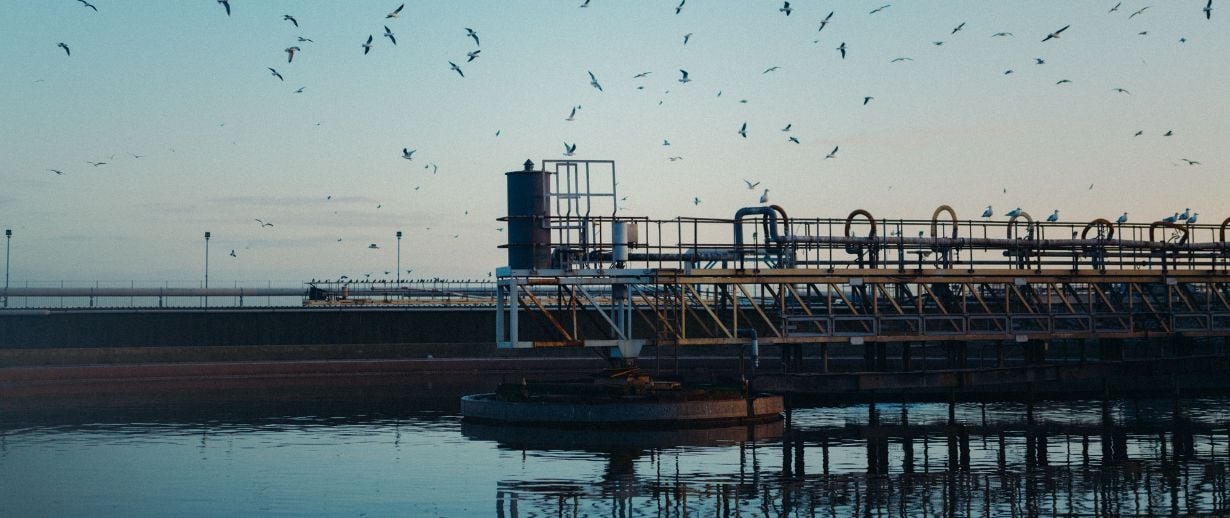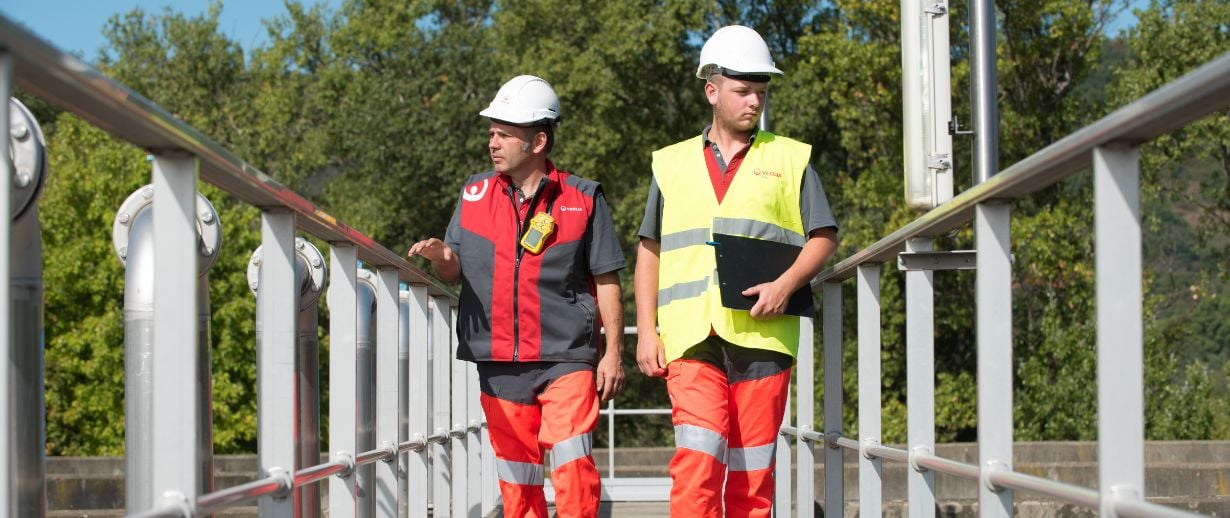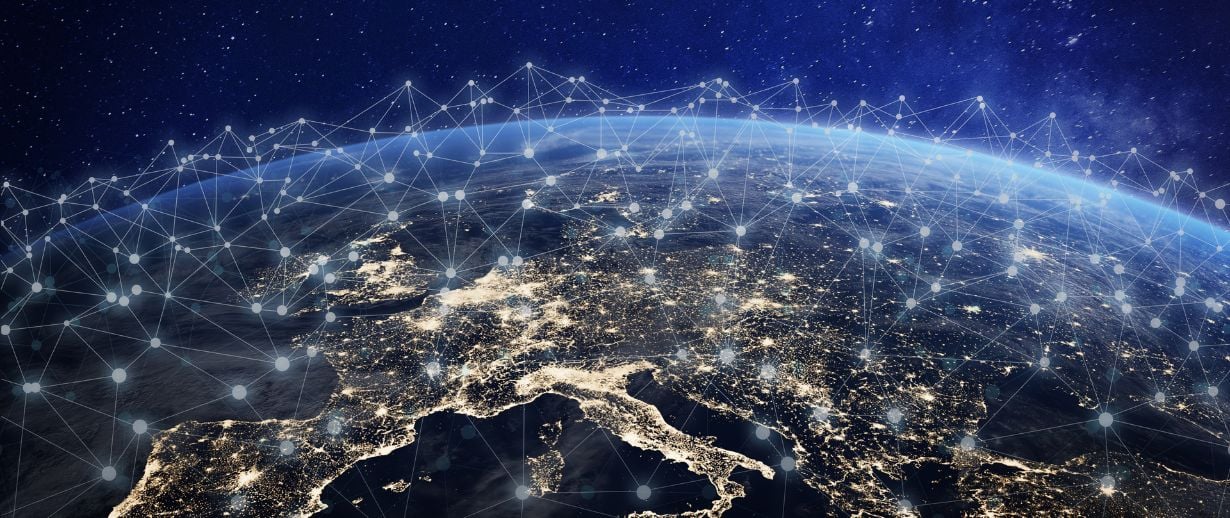What are the benefits of digital twins for wastewater treatment plants? Louis Larsen, European Digital Business Manager, highlights their potential for improving performance, enhancing sustainability and compliance, whilst simultaneously generating cost savings.
Digital twins are virtual replicas of physical assets or systems that leverage real-time data, mathematical models, and advanced analytics. They have become commonplace in sectors such as facilities management, with building managers utilising digital twins to make informed key operational decisions. When it comes to managing water resources, many wastewater treatment plants are under pressure to improve in terms of efficiency, compliance and environmental outlook whilst also keeping costs down for end users. Can digital twins provide a solution to these challenges for wastewater treatment plants? The most crucial benefits can be broken down into three broad categories.
#1 – Performance and optimisation

Numerous studies point to efficiency gains made by adopting digital twin technologies across a range of sectors. This could make a huge difference in the wastewater treatment sector, which accounts for 36% 1 of the total energy used by the water industry as a whole. By extracting real-time data from all available equipment at the plant, and then combining it with mathematical models, plant operators can develop comprehensive insights into the behaviour of their wastewater treatment facility. Inefficiencies, bottlenecks and abnormalities can be identified, process parameters can be optimised, and operations can be fine-tuned to achieve maximised performance of the asset.
Digital twins can also be an essential tool for process control. Live data feeds provide a constant assessment of plant equipment and systems, meaning potential failures can be identified in real time. This can help to reduce downtime, limit costs associated with emergency repairs and increase the lifespan of assets.
Crucially, as wastewater treatment plants seek to expand or undergo modifications, the foundational technologies which they rely on should adapt appropriately. Digital twins are inherently flexible, enabling the seamless integration of new assets and customisation of new parameters and objectives.
#2 – Enhanced sustainability and compliance

A more efficient wastewater treatment plant will also naturally deliver sustainability gains. The digital twin model can provide detailed insights into water and energy usage patterns, enabling operators to analyse opportunities to make improvements. They will be able to see what processes and systems use up the most resources, and if changing certain operational elements may lead to reduced consumption.
In addition to cutting water and energy use, wastewater treatment facilities can also analyse digital twin data to optimise chemical dosing and minimise the generation of waste. Organisations operating across a range of industries are already making these strides. According to the Capgemini study, enterprises which have already begun implementing digital twin technologies are averaging an improvement of 16% in sustainability metrics.
Indeed, more than half (57%) of companies surveyed agreed that digital twins are pivotal tools for improving sustainability efforts, reflecting the growing trend of businesses eager to deliver on their ESG commitments. Key to this is generating a detailed picture – more than one in three organisations surveyed said they had implemented digital twins at scale to understand and predict their energy consumption and emissions.
Meanwhile, because the digital twin captures real-time data and monitors key performance indicators, operators can confirm ongoing compliance with all regulatory standards. Reports demonstrating such compliance can also be generated, while changes in regulations and/or process parameters can be simulated by digital twins to evaluate potential impacts and respond proactively.
#3 – CAPEX and OPEX savings

An important factor to consider when implementing digital twin technologies at a wastewater treatment plant is the cost implication. The upfront cost will depend on several factors, including the size of the plant, the complexity of processes and the level of digitalisation required. This needs to be assessed against the cost savings which can be derived from improved plant performance, reduced maintenance expenses and optimised resource utilisation. With Veolia Water Technologies’ Hubgrade Performance Plant digital twin solution, it is possible to increase biological and hydraulic capacity by up to 100%, reduce energy use by up to 30% and postpone extension projects by more than 15 years.
These are important things to bear in mind, and there is growing evidence to suggest confidence in a strong return on investment. According to a study by Deloitte, digital twins can reduce operational costs by 20-30%, even when deployed in an individual silo. Indeed, it is savings such as these which are driving increased demand for digital twin solutions, the market is forecast to grow at a compound annual growth rate (CAGR) of some 37.5% between 2023 and 2030.
Another cost base to consider is recruitment. One of the most pressing challenges facing the wastewater treatment sector is attracting skilled professionals, particularly those from younger generations. Companies which embrace digital ways of working, including the utilisation of digital twins, will be better positioned to showcase the industry as a forward-thinking, modernised career option, and thus appeal to new talent. This will offer a vital competitive edge in a crowded recruiting market and could lead to sizable cost benefits in the longer term.
The case for digital twins in a changing world

Looking at the bigger picture, there is a pressing and urgent need to increase the supply of fresh water to accommodate growing populations. According to expert estimates, by as early as 2030 the global demand for freshwater will already be exceeding supply by 40%.
This highlights the critical role wastewater treatment plants continue to have, not only in helping the world meet this demand but also in safeguarding public health and protecting the environment, be it through reducing the effect of excess phosphorus on aquatic plants and animals or minimising harmful micropollutants in drinking water.
Digital twins, in helping wastewater treatments to operate more effectively, sustainably and viably, have a crucial part to play.
Click here to read more about digital twins and their potential impact on wastewater treatment in our whitepaper on the subject.